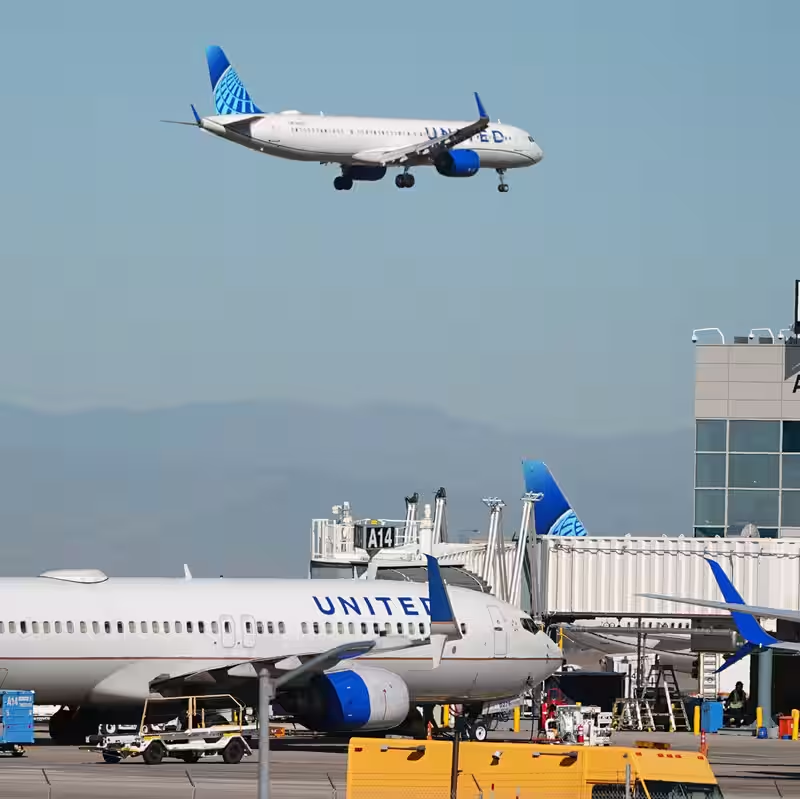Table of Contents
- Mid-Air Windshield Crack Forces Emergency Diversion
- Weather Balloon Company Admits Likely Responsibility
- Are Weather Balloons a Hidden Risk to Aviation?
- FAA and Industry React
- Eyewitness Accounts from Onboard
- Sources
United Flight Diverted After Windshield Shatters at 30,000 Feet
A United Airlines flight from Denver to Chicago was forced to make an emergency landing in Omaha last Thursday after the aircraft’s windshield sustained a sudden, severe crack mid-flight. No injuries were reported, but passengers described moments of panic as the cockpit window fractured with a loud “pop” while cruising at 30,000 feet.
“It sounded like a gunshot,” said passenger Maria Chen, who was seated in row 5. “The pilots immediately put on oxygen masks and announced we were diverting. You could see the crack spreading across the glass—it was terrifying.”
The Boeing 737 landed safely, and the aircraft was grounded for inspection. Initial reports from the airline cited an “unidentified high-altitude object” as the likely cause.
Weather Balloon Company Says It’s ‘Quite Likely’ Their Device Was to Blame
In a surprising development, StratoScience Inc.—a Colorado-based atmospheric research firm—issued a statement on Tuesday acknowledging that one of its weather balloons may have collided with the United plane.
“Based on flight path data, altitude profiles, and timing, it is quite likely our balloon was involved,” said Dr. Alan Reeves, StratoScience’s chief operations officer. “Our telemetry shows the balloon was in controlled descent near the reported coordinates at the exact time of the incident.”
Weather balloons, typically filled with helium or hydrogen, carry instrument packages called radiosondes to collect data on temperature, humidity, and wind. They ascend to 100,000+ feet before bursting and descending via parachute. But malfunctions can cause them to fall faster or off-course.
Key Facts About the Suspected Balloon:
- Launched from Boulder, CO on October 14, 2025
- Carried a 1.2-pound instrument package encased in polycarbonate
- Expected to descend slowly via parachute—but telemetry suggests parachute may have failed
- Estimated impact speed: 120+ mph at cruising altitude
Are Weather Balloons a Hidden Risk to Aviation?
While rare, mid-air collisions between aircraft and scientific balloons have occurred before. In 2018, a research balloon damaged a cargo plane’s wing over Alaska. The FAA estimates that over 70,000 weather balloons are launched annually in the U.S. alone—mostly by the National Weather Service, universities, and private firms.
“Most balloons pose minimal risk because they’re lightweight and descend slowly,” explains aviation safety expert Capt. Diane Morrow. “But if the parachute fails or the payload is dense, it becomes a high-speed projectile. At 30,000 feet, even a small object can compromise an aircraft windshield.”
Modern cockpit windshields are designed to withstand bird strikes and hail, but they’re not rated for dense, fast-falling man-made objects.
FAA Launches Review Amid Calls for Stricter Tracking
The Federal Aviation Administration has opened a formal investigation and is coordinating with NOAA and private balloon operators. Lawmakers are now urging mandatory real-time GPS tracking and automatic altitude alerts for all high-altitude balloons.
“This incident exposes a blind spot in our airspace monitoring,” said Sen. Tammy Duckworth (D-IL), who sits on the Senate Transportation Committee. “If a $200 weather device can crack a $100 million jet’s windshield, we need better safeguards.”
Passengers Praise Crew’s Calm Response
Despite the scare, passengers commended the United flight crew for their professionalism. “The pilots were rock solid,” said traveler James Ortiz. “Within minutes, they had us on the ground and safe. It’s a miracle no one was hurt.”
United Airlines confirmed the aircraft will undergo full structural evaluation before returning to service. The airline also said it’s cooperating fully with federal investigators.




